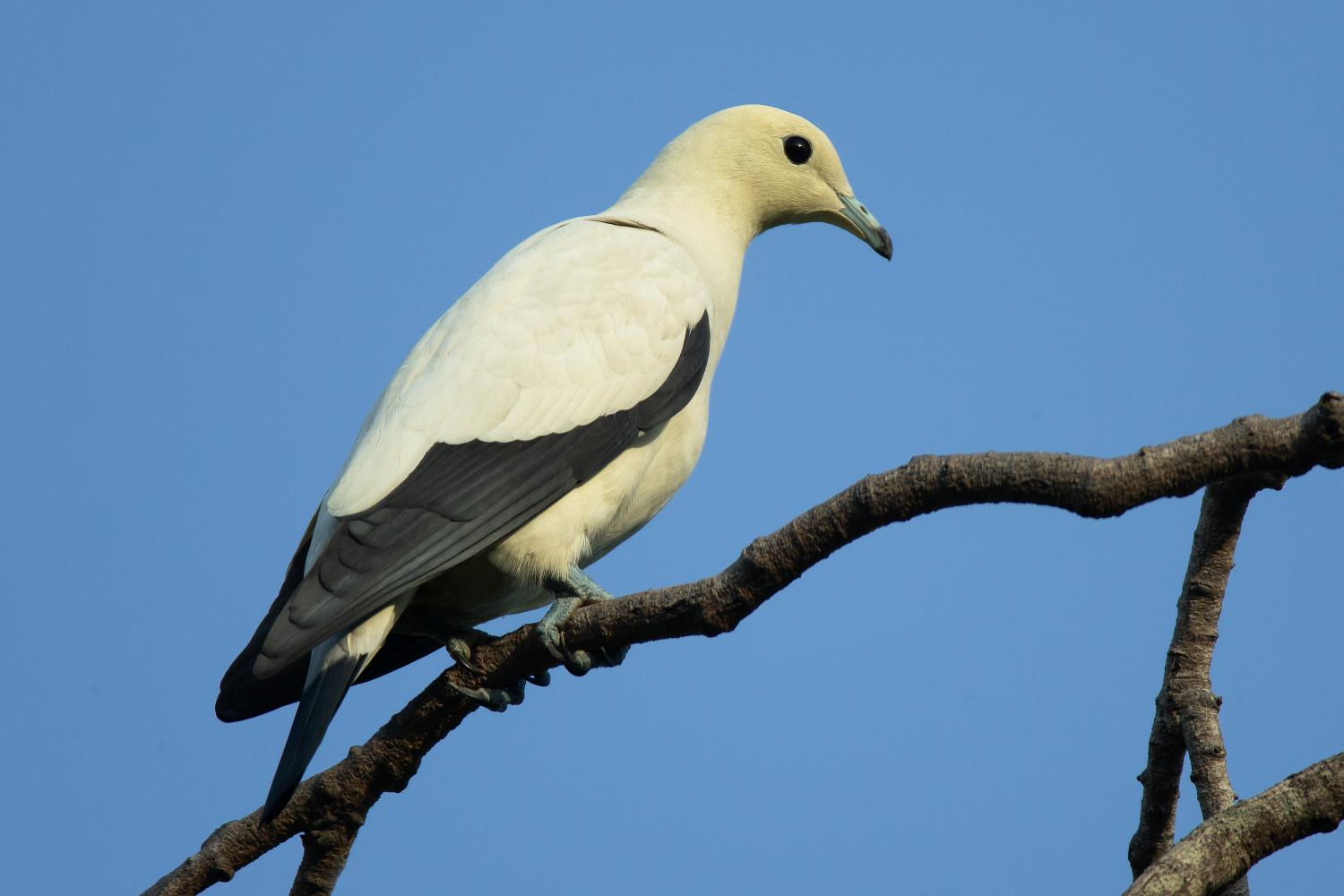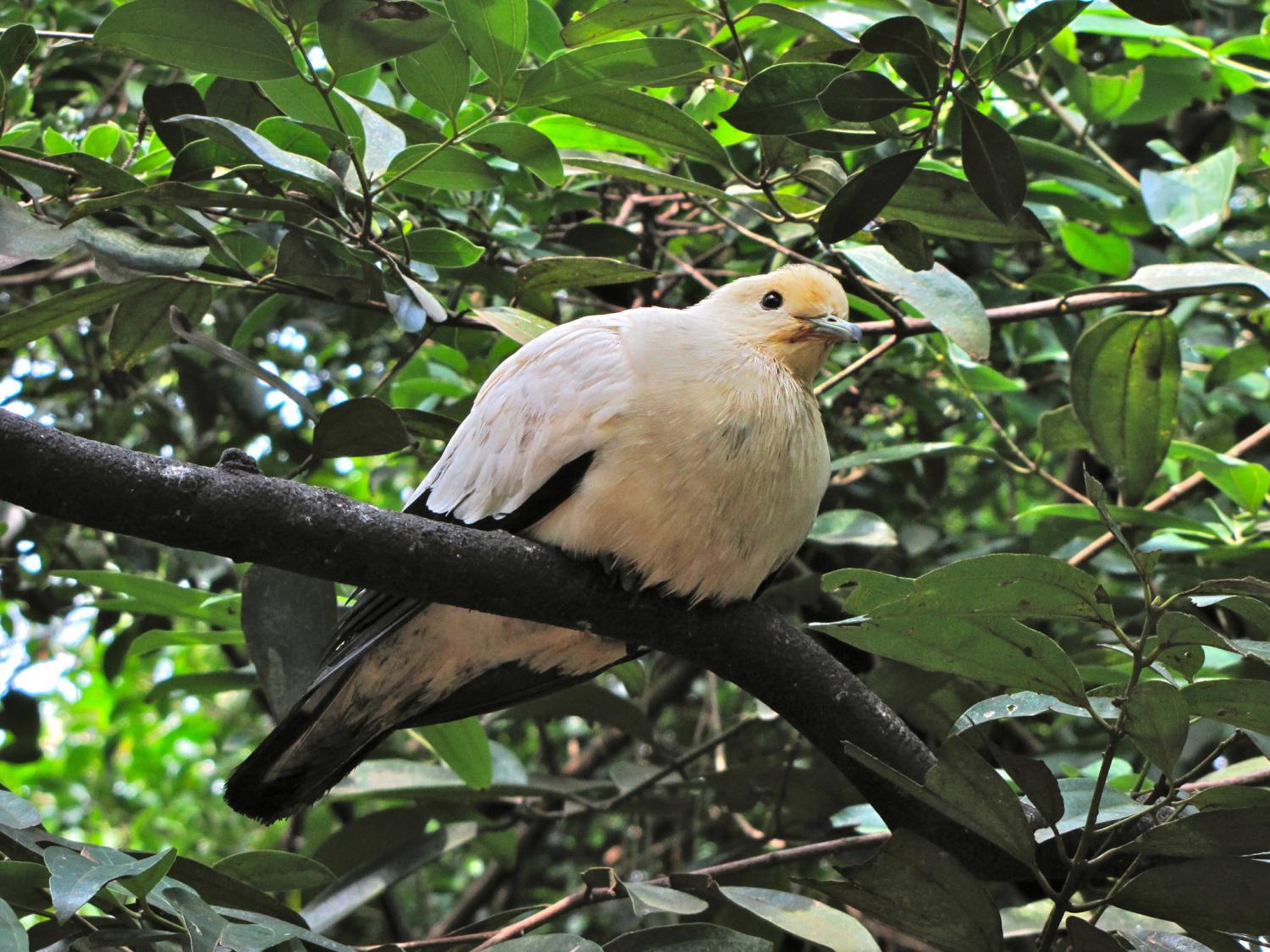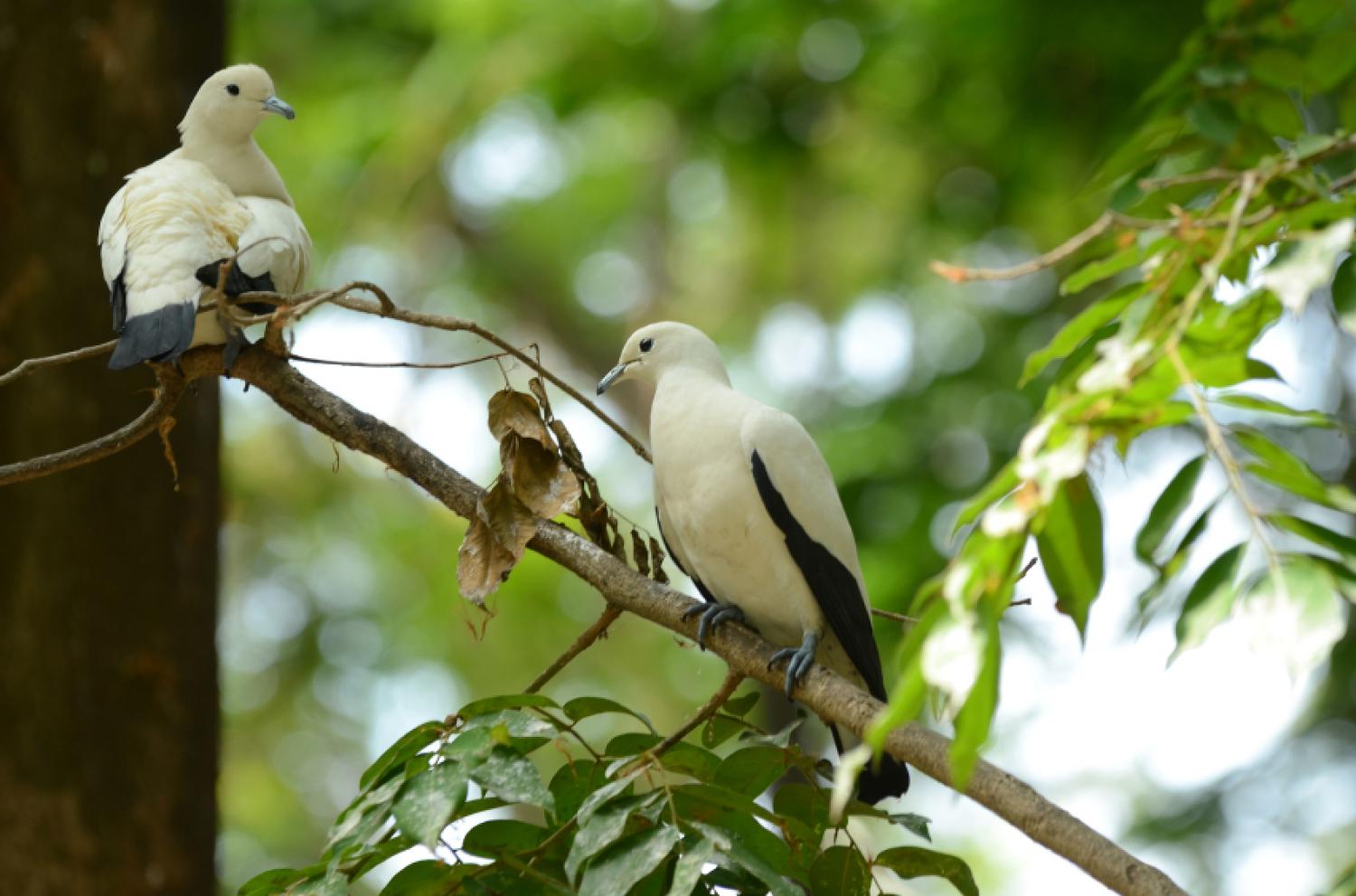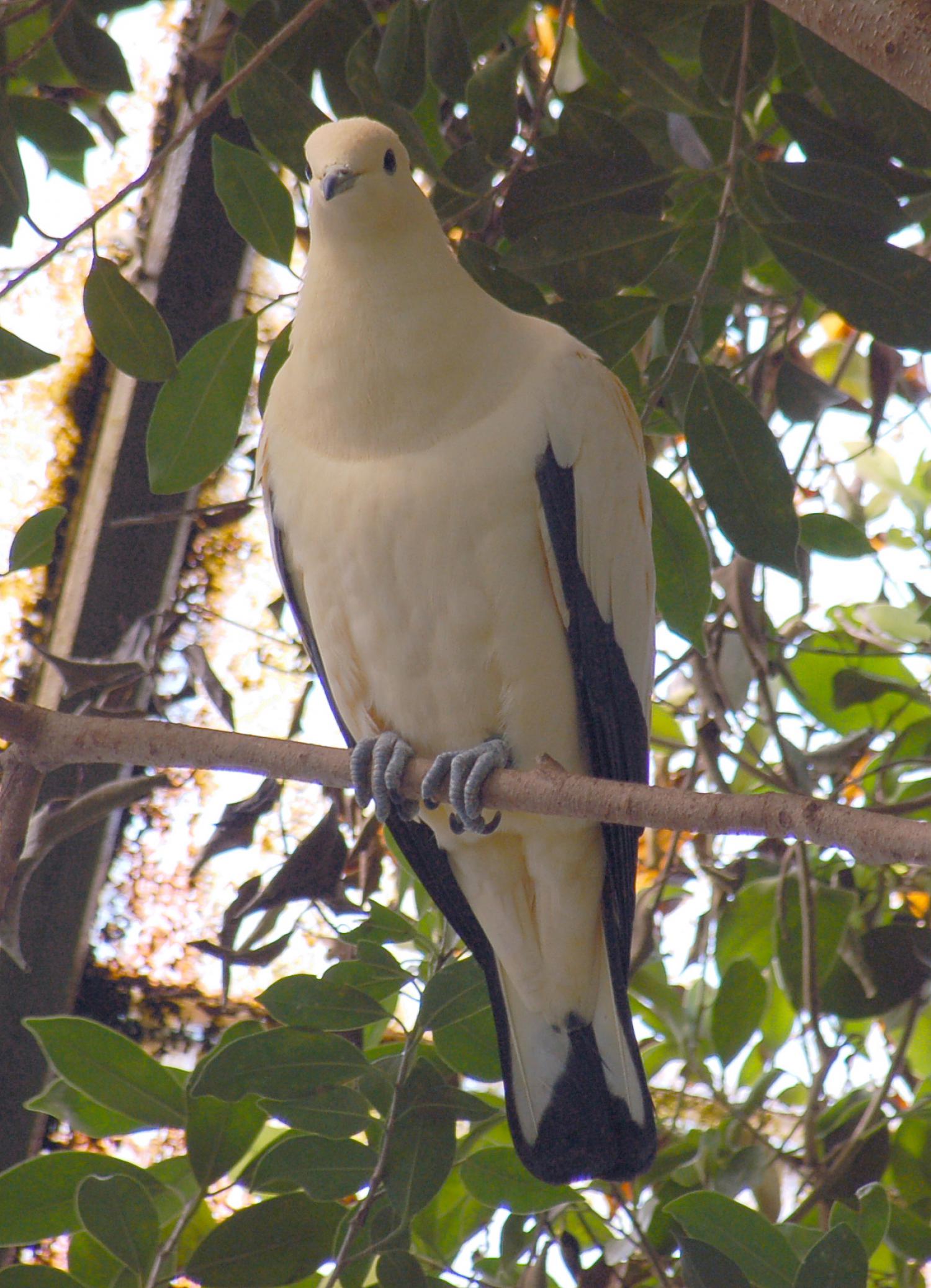Species of Thailand
Pied imperial pigeon
Ducula bicolor
Giovanni Antonio Scopoli, 1786
In Thai: นกลุมพูขาว
The pied imperial pigeon (Ducula bicolor) is a relatively large, pied species of pigeon. It is found in forest, woodland, mangrove, plantations and scrub in Southeast Asia, ranging from Myanmar and Thailand, throughout Indonesia and east to the Philippines (where it is locally called as balud-puti) and the Bird's Head Peninsula in New Guinea. It is mainly found on small islands and in coastal regions. It remains locally common, and is therefore considered to be of least concern by BirdLife International and IUCN.
Taxonomy
Its taxonomy is confusing and remains unsettled. It has sometimes included the Torresian, yellowish and silver-tipped imperial pigeons as subspecies. The widespread nominate subspecies of the pied imperial pigeon differs from all these by its plain white thighs and undertail coverts (though often with a dark spot at the very tip), and its narrowly dark-tipped bluish bill. For comparison, the other species' have black-spotted undertail coverts and thighs (spotting mainly near thighs in silver-tipped imperial pigeon), the bill of the Torresian imperial pigeon is greenish-yellow, and the bills of the yellowish and silver-tipped imperial pigeons are bluish at the base and yellowish at the tip. Furthermore, the yellowish imperial pigeon has a distinctive yellowish tinge to its plumage (some pied imperial pigeons may also appear yellowish, but infrequently to the same extent), and the silver-tipped imperial pigeon has silvery-grey remiges. However, the taxon melanura of the Moluccas, which usually is considered a subspecies of the pied imperial pigeon, resembles the Torresian imperial pigeon in bill, thighs and undertail coverts, but has a significantly broader black tail-tip. Consequently, some have suggested it should be placed under the Torresian imperial pigeon, while others have suggested it should be considered an entirely separate species, D. melanura (for which the name black imperial pigeon has been used – an unfortunate choice, as only the tail has significantly more black than the other members of this group, and the name black imperial pigeon usually has been used for D. melanochroa). Yet others have considered melanura to be invalid, instead believing it only is a morph of D. b. bicolor, as both types can be found on some islands.
This article uses material from Wikipedia released under the Creative Commons Attribution-Share-Alike Licence 3.0. Eventual photos shown in this page may or may not be from Wikipedia, please see the license details for photos in photo by-lines.
Category / Seasonal Status
BCST Category: Recorded in an apparently wild state within the last 50 years
BCST Seasonal status: Resident or presumed resident
Scientific classification
- Kingdom
- Animalia
- Phylum
- Chordata
- Class
- Aves
- Order
- Columbiformes
- Family
- Columbidae
- Genus
- Ducula
- Species
- Ducula bicolor
Common names
- English: Pied imperial pigeon
- Thai: นกลุมพูขาว
Conservation status

Least Concern (IUCN3.1)
Photos
Please help us review the bird photos if wrong ones are used. We can be reached via our contact us page.
Range Map

- Bang Phra Non-Hunting Area
- Hat Chao Mai National Park
- Kaeng Krachan National Park
- Khao Dinsor (Chumphon Raptor Center)
- Khao Phra - Bang Khram Wildlife Sanctuary
- Khao Sam Roi Yot National Park
- Khao Sok National Park
- Khura Buri District, Phang Nga
- Klaeng District, Rayong
- Ko Lanta National Park
- Ko Tao
- Mueang Krabi District, Krabi
- Mueang Phang Nga District, Phang Nga
- Mueang Phuket District, Phuket
- Phi Phi Islands
- Samut Prakan Province
- Similan Islands
- Sirinat National Park
- Surin Islands
- Tarutao National Marine Park
- Thalang District, Phuket
- Thale Noi Non-Hunting Area



